Wave Collector
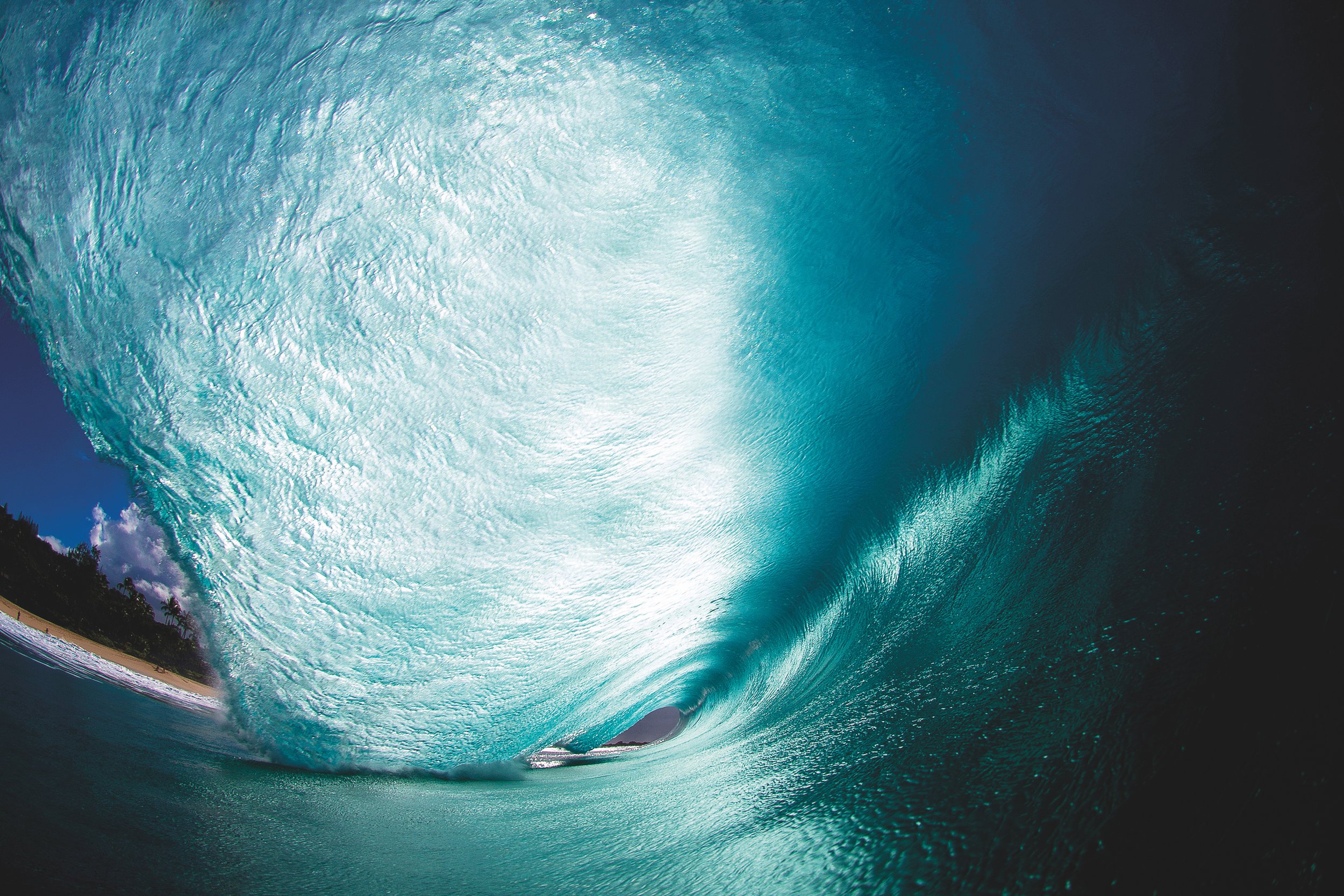
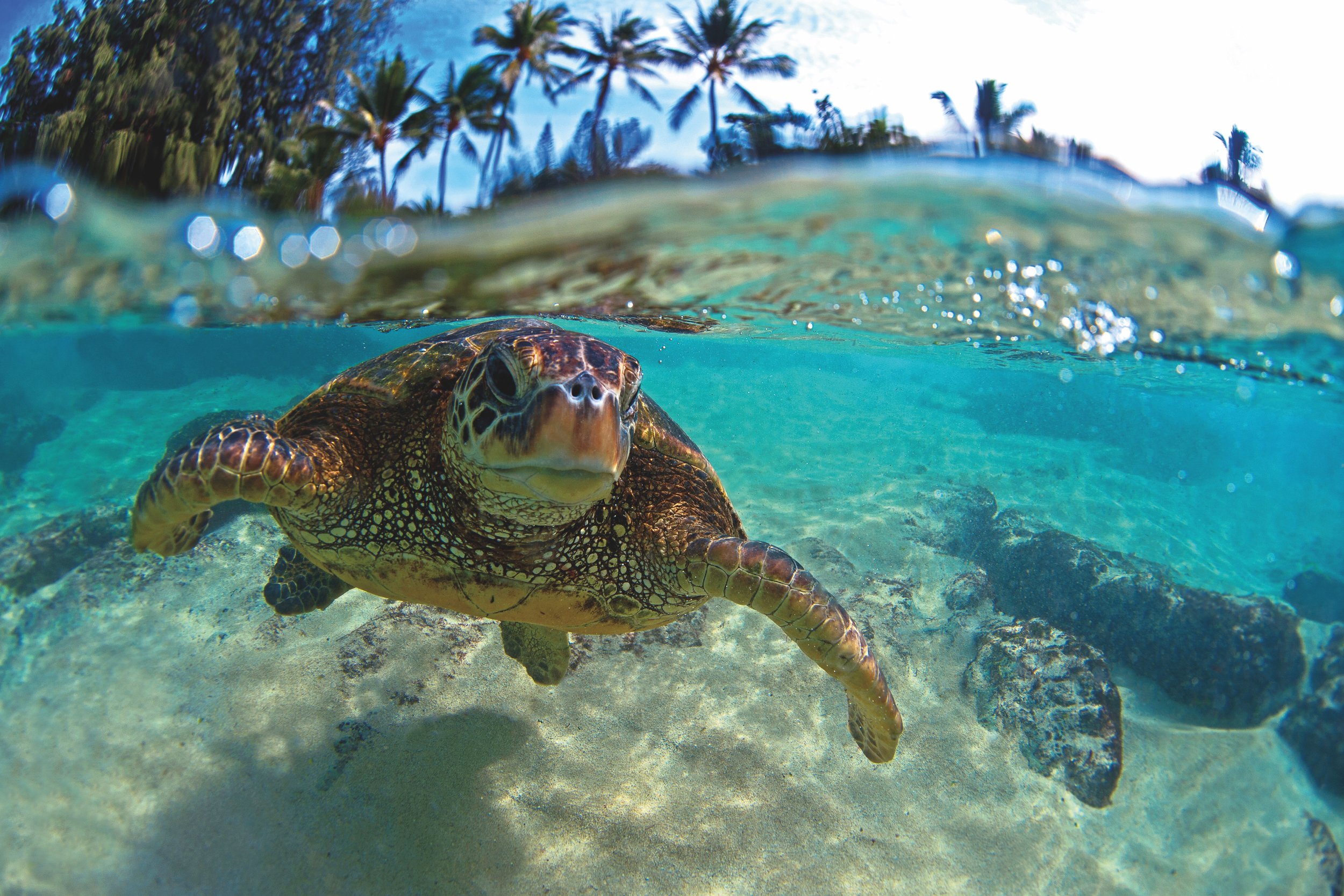
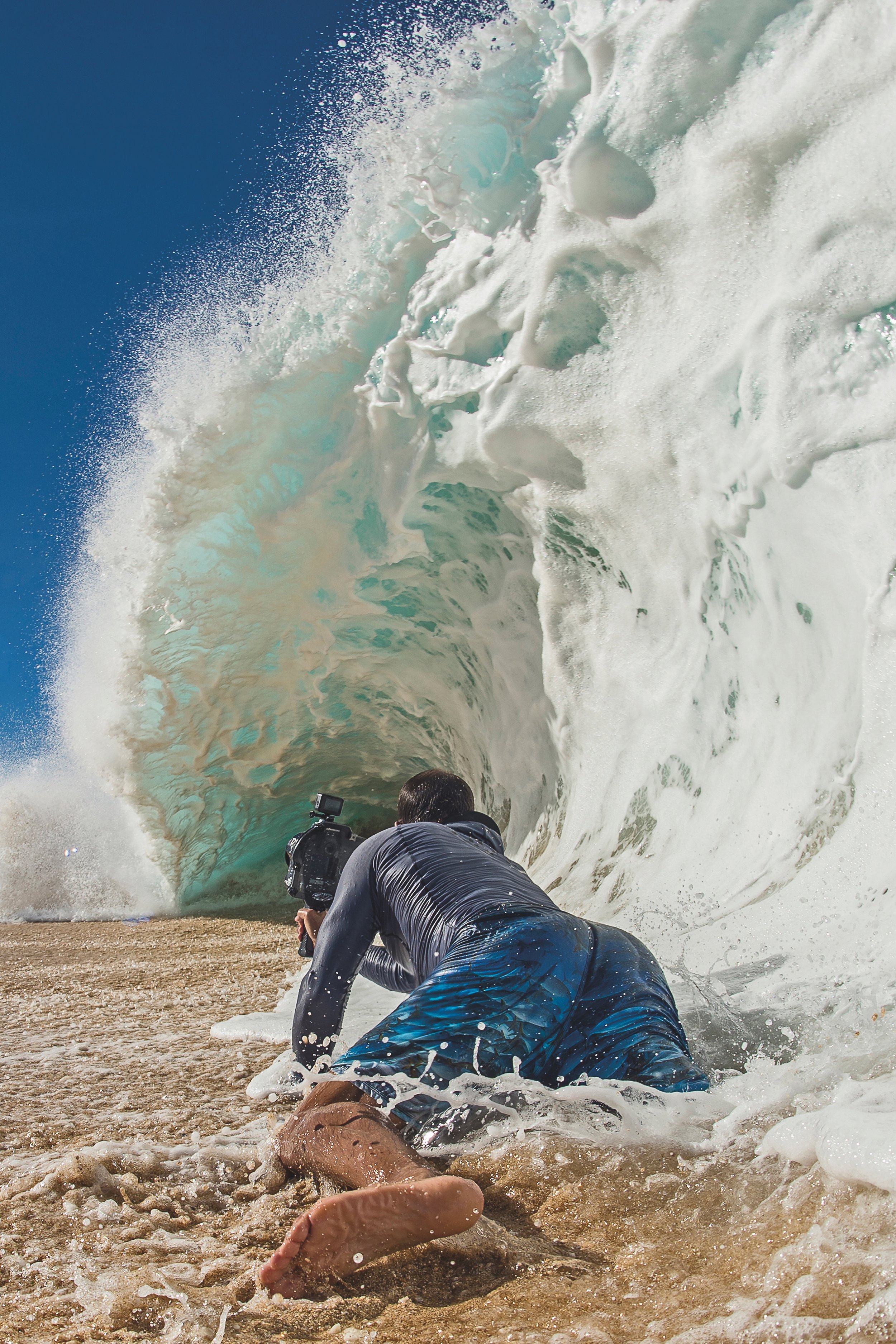
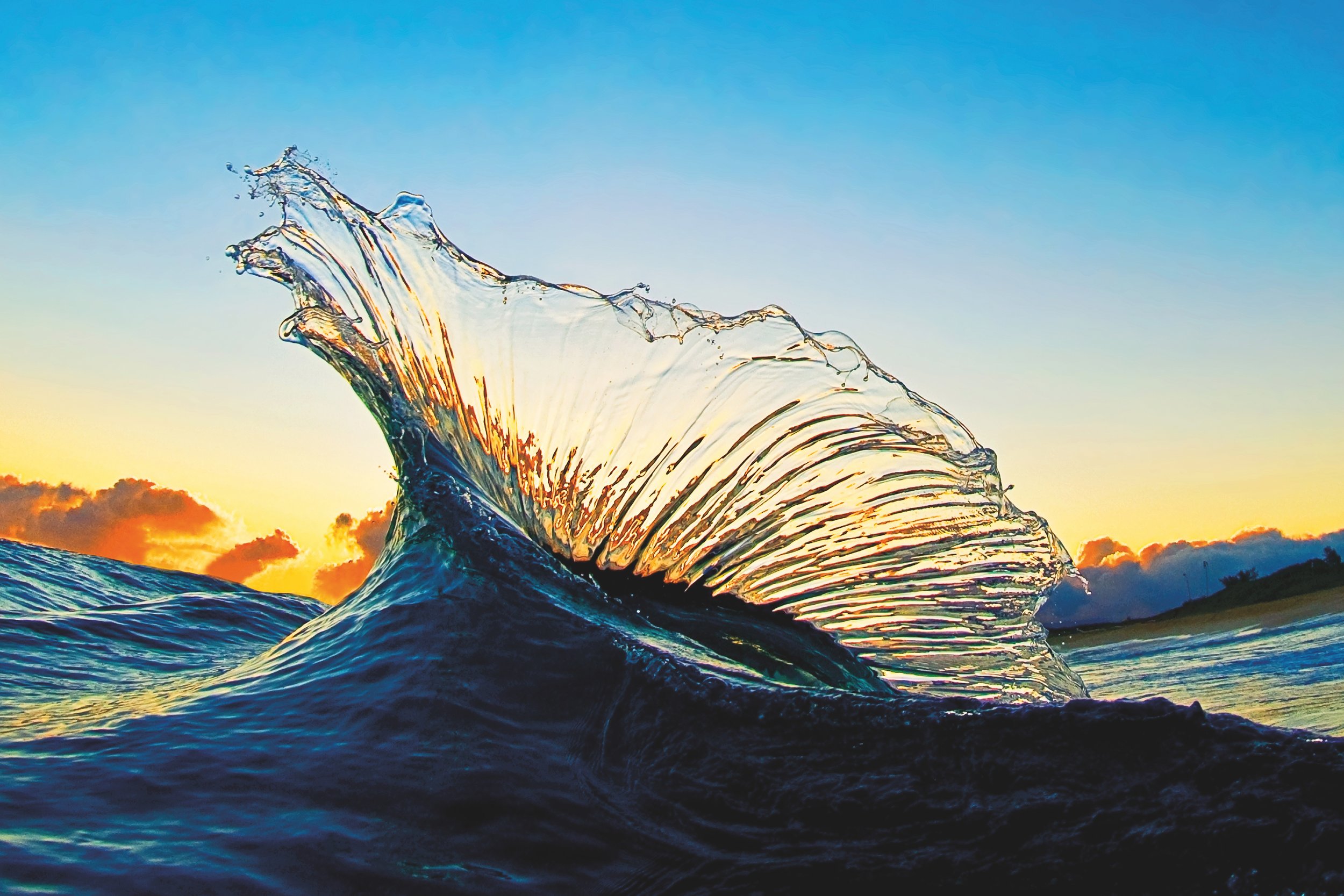
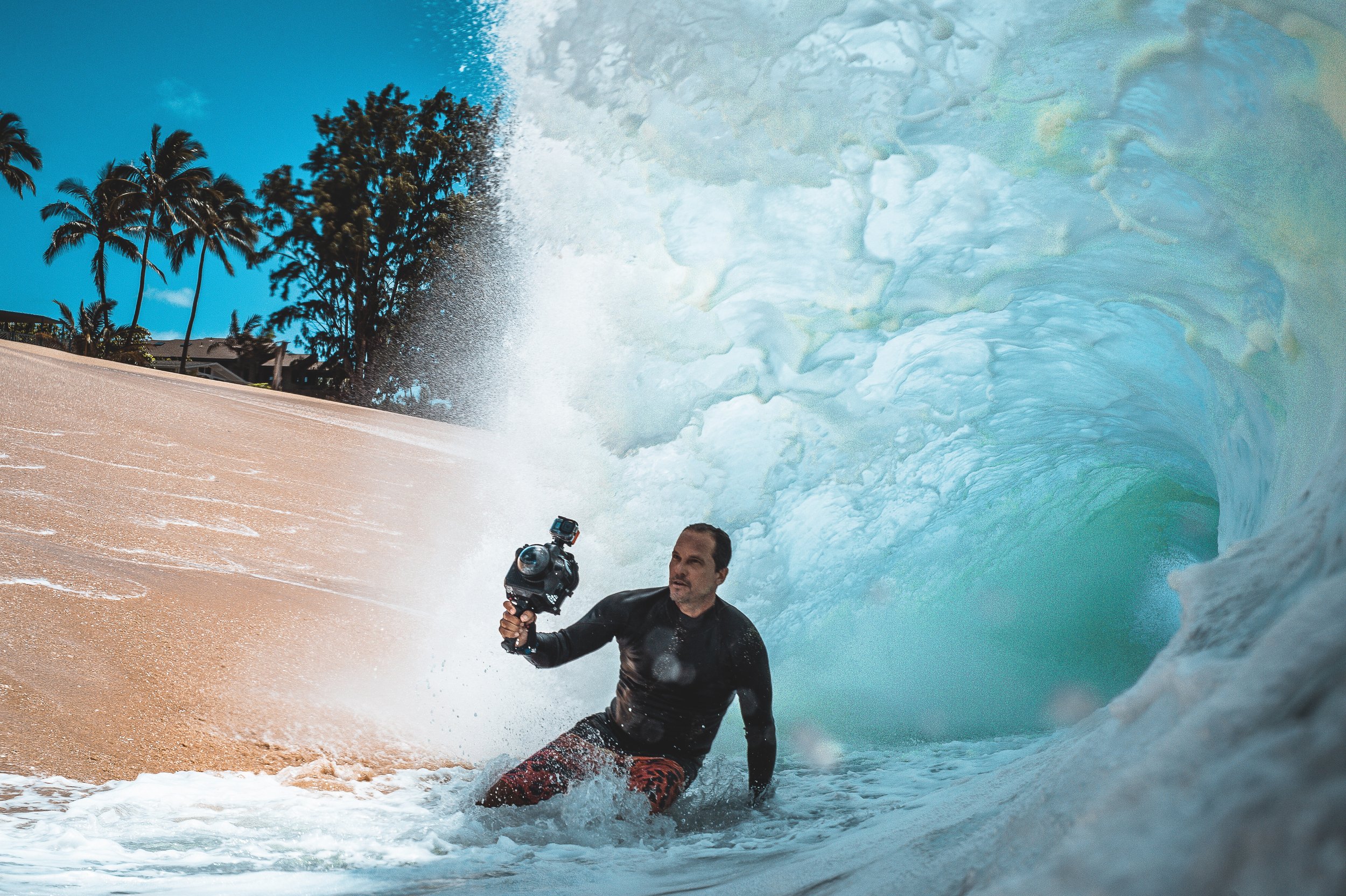
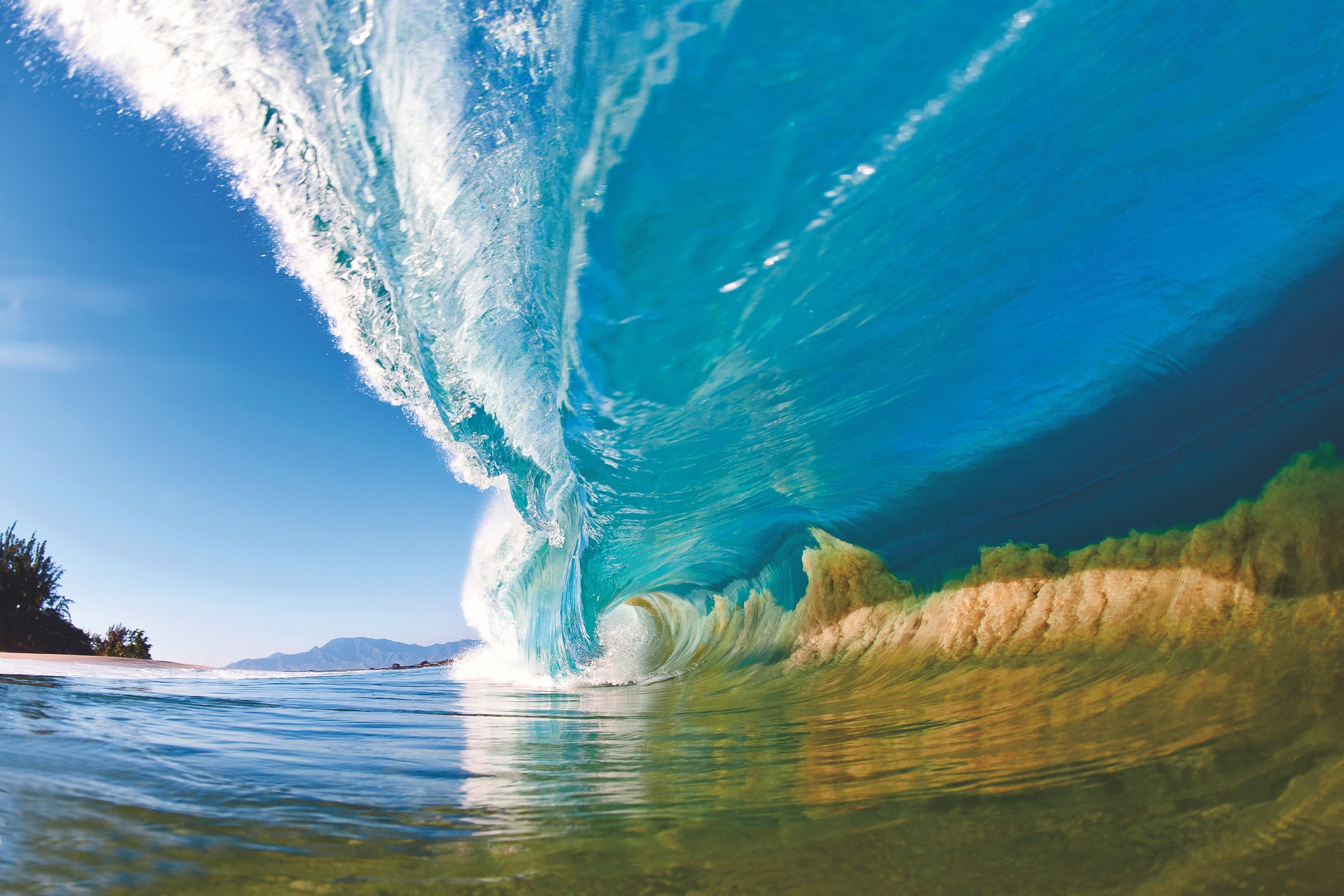
“I’m grateful like you can’t imagine,” says Clark Little on what appears to be his overnight success as an internationally recognized photographer. The famed, North Shore-based artist, who’s legendary photos from the inside of the world’s most dangerous waves, has his images gracing the walls of collectors around the world. His images have appeared in glossy mags, wrapped around cars across Asia, and have been used in ad campaigns for Apple and other major corporations. His Hale‘iwa gallery showcases his impressive ocean photography while his website sells his images alongside image-branded items like hoodies, coffee mugs and beach sandals. Today, Clark Little’s name is synonymous with surf photography.
Not bad for a guy who was a botanical garden supervisor before picking up a camera and jumping into the swell.
Little, who’s family moved to Hawai‘i from California in the ’’70s, grew up around the ocean and big waves. His brother became a professional big wave surfer and Little surfed alongside him and many other surfers on O‘ahu’s North Shore. That experience taught him how to handle himself in what many would consider the world’s most treacherous ocean conditions. “Being in the ocean all my life, I know where to put myself when the waves are crashing,” says the Hawai‘i waterman about how he captures his unique photographs.
Nicknamed “Turbo” as a kid due to his adventurous nature, Little throws himself into the middle of towering waves that reach more than 20 feet high for perspectives only the world’s elite surfers will see and experience. Using an ultrawide fisheye lens inside a waterproof camera case, he’s able to freeze images of glassy green water cascading overhead where waves burst into shapes of hearts and seashells. Turtles majestically swim inside swirling vortexes of sand as sunlight punctures the scene like a serene blue dream. Little’s images also convey the thunderous Neptunian power of mother nature.
Little mostly shoots shore breaks around the North Shore with many of his images coming from Waimea Bay, a stone’s throw away from his home where he can hear the waves crashing on the beach the night before he goes out for his photo shoots. Little has also photographed waves on the outer Hawaiian Islands, as well as in California, Japan, Brazil, French Polynesia and Tonga.
Yet Little did not start off with a photo career in mind when he took his first wave photos in his late 30s. Little, who worked as a botanical garden supervisor, says he got his start after his wife brought home an ocean photograph to hang on the wall. He exclaimed, “Jeez, what are you doing, honey? I can do that!” Little then said he used an off-the-shelf digital camera, got an inexpensive water case off the internet, and went out to shoot the waves.
Afterwards, he’d share his images with friends and family on the just burgeoning social media platforms. “My friends replied ‘Holy Moses!’ as no one had ever taken those types of photos at the time,” says Little.
Little reveals he had no photo experience when he first hit the waves, though his father started the photography program at Punahou School and taught photography at community college. He states he had no interest in the craft and never owned a camera. “Photography was more in my blood than in my background as I never took lessons from my father…I wasn’t interested so it just happened naturally, organically, I started taking photos one at a time.”
When he first started taking pictures, Little says he just “winged it” with his amateur equipment. His initial success pushed him to get better photos, so he asked a veteran surf photographer for advice. With the new information, he purchased a professional-level camera with a proper water case and recalls, “that surf photographer told me how to set up my camera, and once I dialed my setting, the rest is history.”
After a few years of shooting, his connections in the surf world got him published in a surf magazine to much acclaim. But his big break came after a UK news agency contacted him asking him to share 20 of his best photos. Little, not thinking much of it, sent them the images that night and “the next morning when I woke up, I had 600-700 emails notifying me that my pictures went viral and Good Morning America and Today show were negotiating with me to get on a red eye flight to be on their show the next day.”
“And before you know it, I was on Inside Edition, had a double-page spread published in National Geographic and was shooting a job for Apple.”
His overnight success astounded the humble Little who never imagined he’d be on top of the photo world. Yet he acknowledges it took hard work to get his images. He also recognizes he risks his life every time he puts himself underneath those massive waves. “Just that vision … that adrenaline … the excitement of that wave sucking up in front of you barreling up over you is priceless for me,” he says. “Mother Nature is crazy … she’ll give you the beautiful shot but at the same time, I’ll have to pay my dues and fear for my life.”
Little believes he’s an artist but also an athlete at the same time, stating it takes immense physical strength and stamina to swim through the heavy surf, carrying his bulky and heavy waterproof camera. “It is not like I’m sitting on the sidelines clicking away at the waves ... I have to run into the big shore break and risk getting sucked up into the falls.”
Little says he’s had his fair share of harsh conditions while taking pictures. “The times where I’ve had close calls have been a cumulation of many waves … like big sets of ten waves that are consistent and nonstop … I’m trying to swim out, but it keeps breaking in front of me and I can’t get in and you get into this zone where you keep twirling and you keep coming up for air and you gotta go back down under,” he explains. But his aquatic athleticism gives Little the edge in capturing his world-famous images.
“I’m just stoked that I can bring a camera out with me, get inside that big shore break wave and share that vision, share that adrenaline rush with people to see in my book, or in my gallery, or social media all over the world.”
Little is unsure if he’s reached the apex of his photographic career but claims he will not stop taking shore break pictures until he doesn’t love it anymore. “I keep thinking, is this the pinnacle? But something always happens … but that’s part of the luck, part of the drive I have, but it’s neat not knowing what tomorrow has in store.”
When asked if he’s lucky, Little responds, “Heck yeah, I’m definitely a lucky person!”
Little’s new book, The Art of Waves, shares his most remarkable photographs from inside waves over his 15-year photographic career. “It’s crazy to look back … I got this crazy book that’s like a portfolio where I can share my passion and share it all over the world,” Little says.
“I couldn’t be more grateful as it’s a dream come true. Never in my wildest dreams did I think I would be where I am today. It’s a blessing.”
Clark Little Gallery Haleiwa, 66-111 Kamehameha Hwy., #102
Hale‘iwa, clarklittlephotography.com
